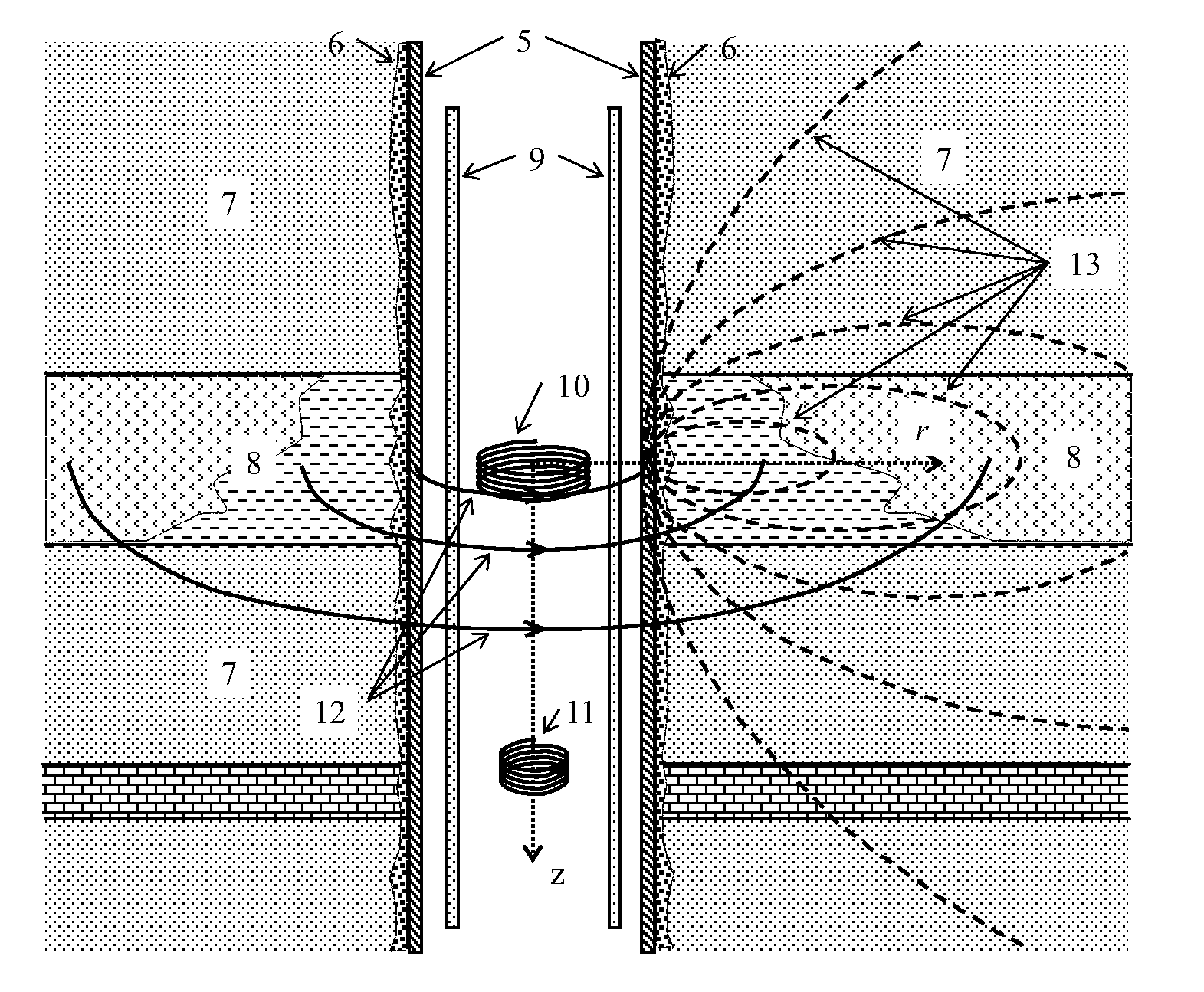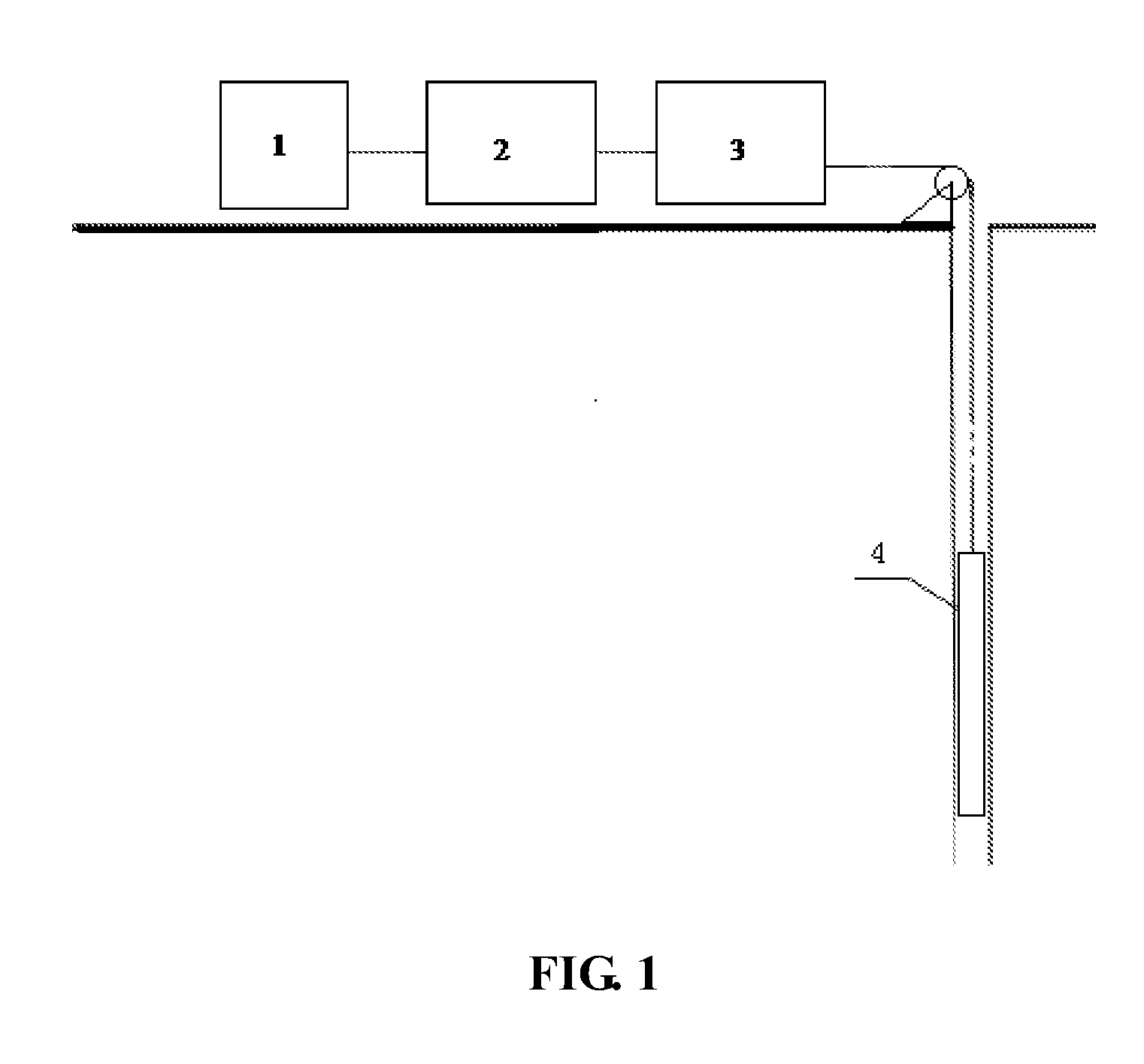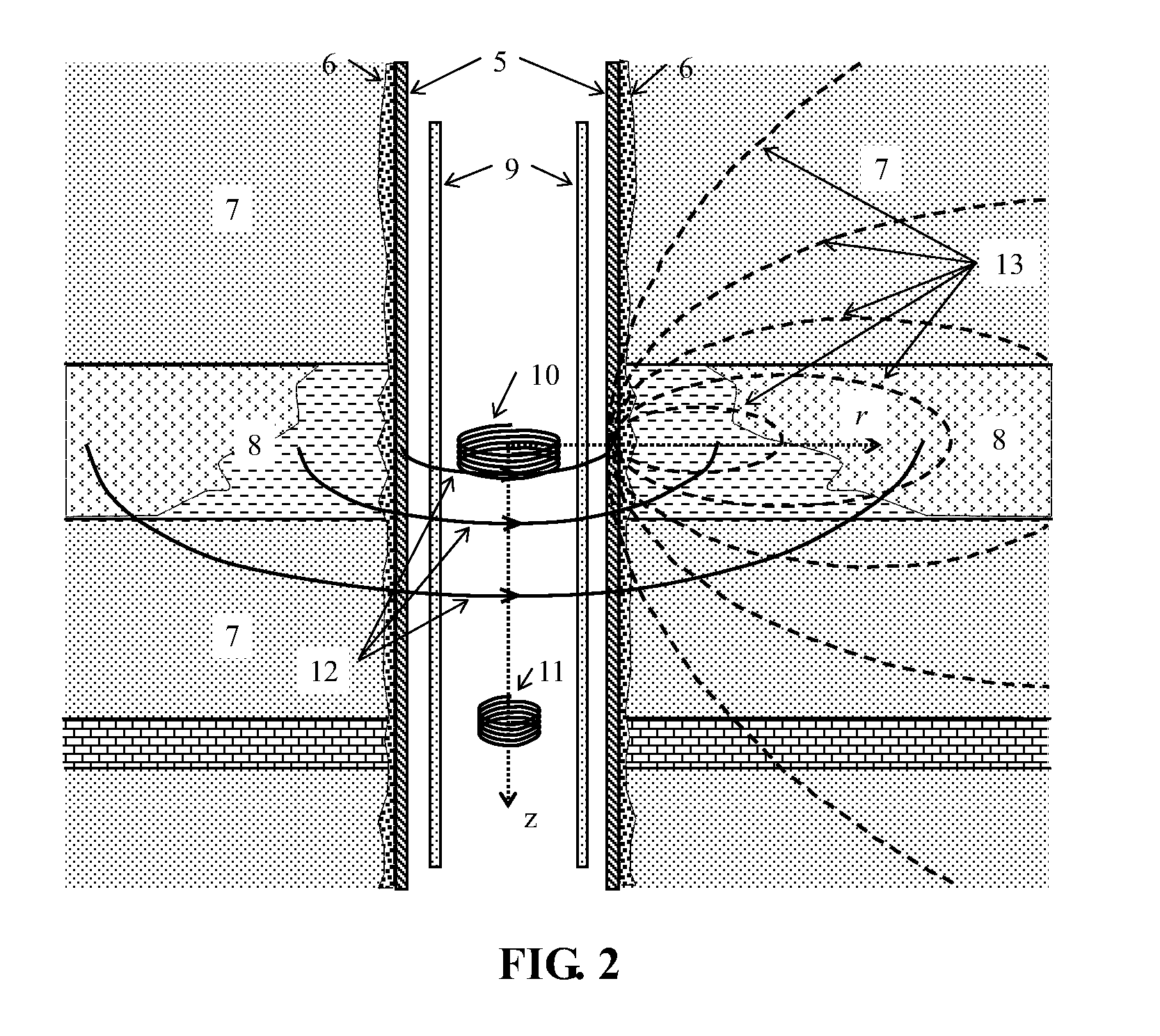Method for detecting formation resistivity outside of metal casing using time-domain electromagnetic pulse in well
a technology of electromagnetic pulse and metal casing, which is applied in the direction of seismology for waterlogging, using reradiation, instruments, etc., can solve the problems of insufficient resistance of metal casing, so as to reduce the use cost, reduce the average power consumption of a power supply, and reduce the scope of the probe radius
- Summary
- Abstract
- Description
- Claims
- Application Information
AI Technical Summary
Benefits of technology
Problems solved by technology
Method used
Image
Examples
Embodiment Construction
[0043]This invention is explained in further detail below with the aid of the example and attached drawings:
[0044]A time-domain pulsed electromagnetic method comprising electromagnetic pulse transmission and magnetic signal reception in a cased well has been employed for field data acquisition of formation resistivity through a metal casing and the observation scheme is as shown in FIG. 1. A generator 1 supplies power to a transmitting system of a downhole instrument 4 through a transmission control device 2 and a wellhead control device 3. The receiving and recording system of the downhole instrument will record the data of a borehole induced electromotive force changing with time under electromagnetic pulse excitation.
[0045]The working principle of the downhole instrument is as shown in FIG. 2. A metal casing 5 used in oil well development is consolidated with formation by a casing cement 6. The formation is divided into a surrounding strata 7 and a reservoir 8 having certain poro...
PUM
 Login to View More
Login to View More Abstract
Description
Claims
Application Information
 Login to View More
Login to View More - R&D
- Intellectual Property
- Life Sciences
- Materials
- Tech Scout
- Unparalleled Data Quality
- Higher Quality Content
- 60% Fewer Hallucinations
Browse by: Latest US Patents, China's latest patents, Technical Efficacy Thesaurus, Application Domain, Technology Topic, Popular Technical Reports.
© 2025 PatSnap. All rights reserved.Legal|Privacy policy|Modern Slavery Act Transparency Statement|Sitemap|About US| Contact US: help@patsnap.com



